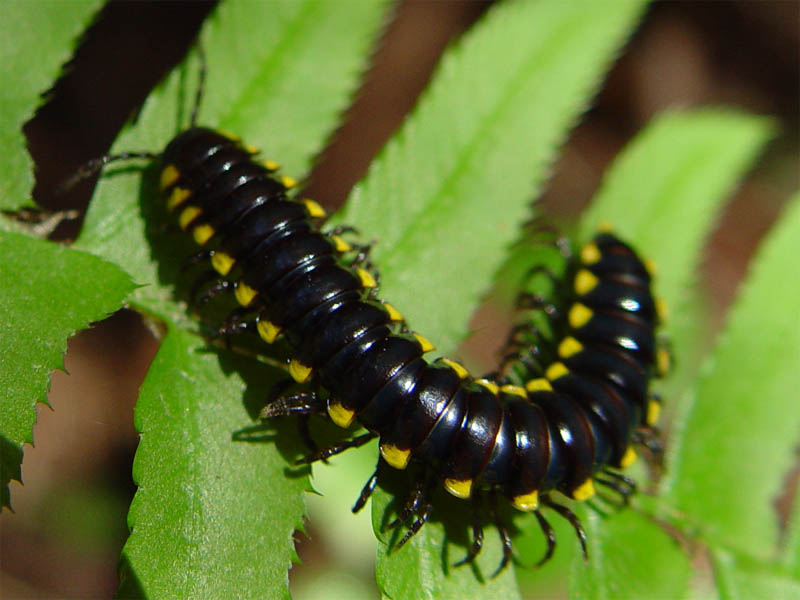SERVICE REQUEST?
Fill out the form below.
Find our nearest location
Your Local Office

Millipede
Attribution: Franco Folin, [GFDL, CC-BY-SA-3.0 or CC-BY-2.5], via Wikimedia Commons
Size:
Generally small, about two inches or less in length. Some forest species in the southeastern United States may grow to four or more inches.
Color:
Brown or black.
Behavior:
Millipedes live in moist vegetation, leaf litter, and mulch. They feed upon decaying organic matter found in these areas. Millipedes are distinguished from centipedes in that they have two pairs of legs per body segment, while centipedes have only one pair of legs per body segment. Although dozens of millipedes may be found outside buildings, few may wander inside. If they do, millipedes usually die very quickly due to lack of moisture. They can, however, survive indoors in moist basements and crawl spaces. Under the right conditions, millipede “migrations” can occur. Where considerable amounts of decaying organic matter are found, such as thick leaf litter under trees or thick thatch layers in lawns, thousands of millipedes might be produced. If the area where they live dries out, becomes too wet, or the millipede population grows too large, a migration may occur. Thousands of millipedes begin crawling in search of better living conditions. In a few cases, hundreds of thousands of millipedes are present. In such cases, keeping all millipedes out of a building is likely impossible. Treatments can help minimize the numbers, however.
Outdoors, millipedes are found in leaf litter, landscape mulch, lawns, and under items in contact with the ground. Indoors, millipedes may survive in moist areas of garages, crawl spaces, and basements.
The following actions will help in controlling millipedes:
- Reduce potential breeding sites and harborages next to and near the building.
- Keep mulch and heavy vegetation, such as ivy, away from the foundation.
- Seal cracks and holes in the home s exterior to prevent millipedes from entering.
- Millipede migrations may require repeated treatments to the exterior and to cracks in the outside of the affected building.
- Determine the area where millipedes are originating and remove the material in which they are breeding (e.g., leaf litter, mulch), if possible.
Remember that total elimination of millipedes indoors may be impossible – especially when huge numbers are involved. Professional treatment, sealing cracks and holes, and removing breeding material should greatly reduce the numbers of millipedes.
Family Name:
Class Dilopoda
Read What Our Clients
Are Saying
My Terminix tech Scott is the best! He is professional, courteous and absolutely thorough about his job. Thank you for sending such a blessed tech to my house. Hamlet, NC
This letter is to say how pleased we are here at Morreene West Apartments with your services. We are very pleased with the technician, Christopher. He does a great job. Durham, NC
Terminix has consistently offered our apartment complex reliable, competent service. We are completely satisfied with their knowledgeable representative who is always punctual and does a superior job for us every time. Chapel Hill, NC
I would like to take the time to thank you for giving us such great service here at Carver Pond Apartments. Your Pest Technician Christopher Mitchell has provided us with excellent service over the last few months. Christopher is such a great help to us in providing helpful information so that we can better serve our residents here at Carver Pond. Durham, NC
SERVICE REQUEST?
Fill out the form below.